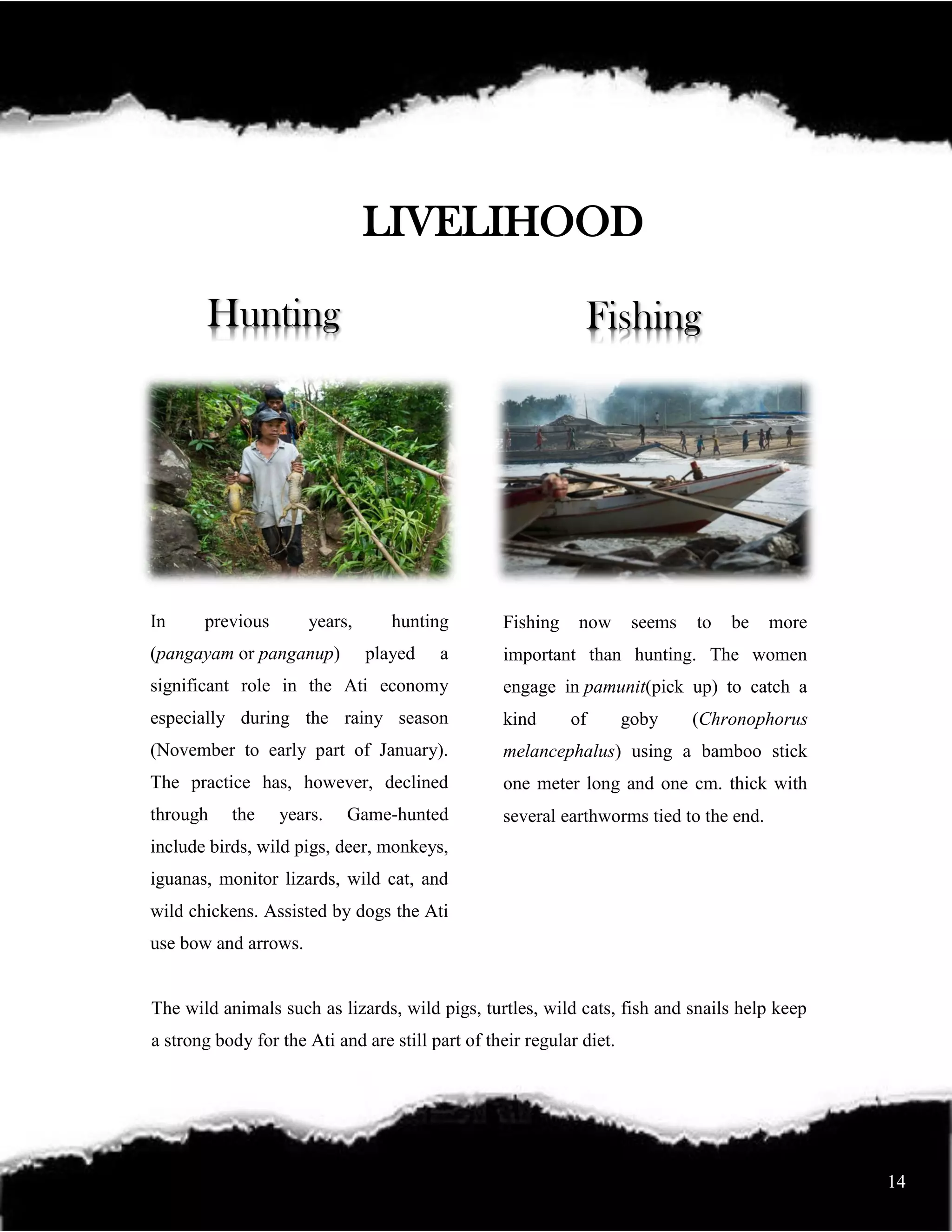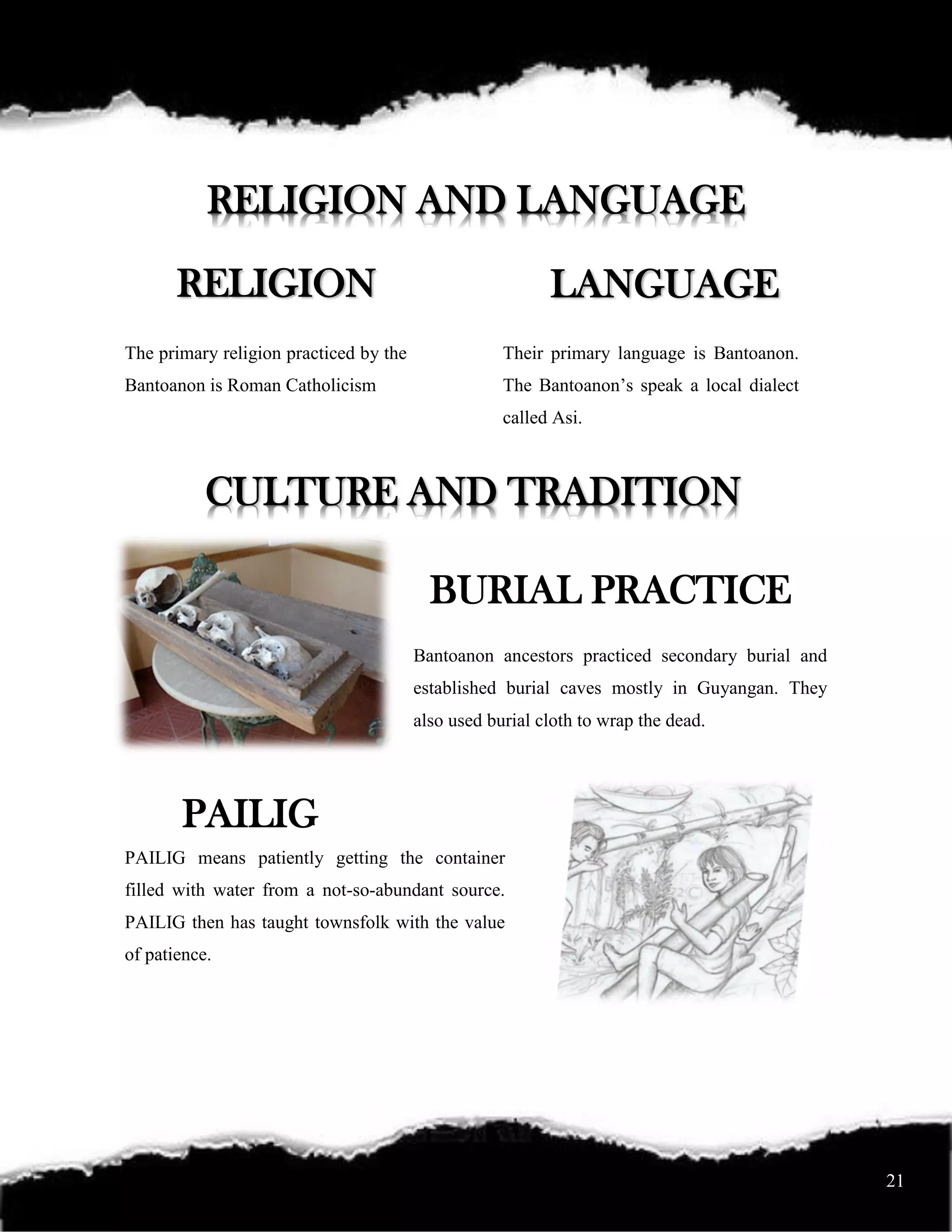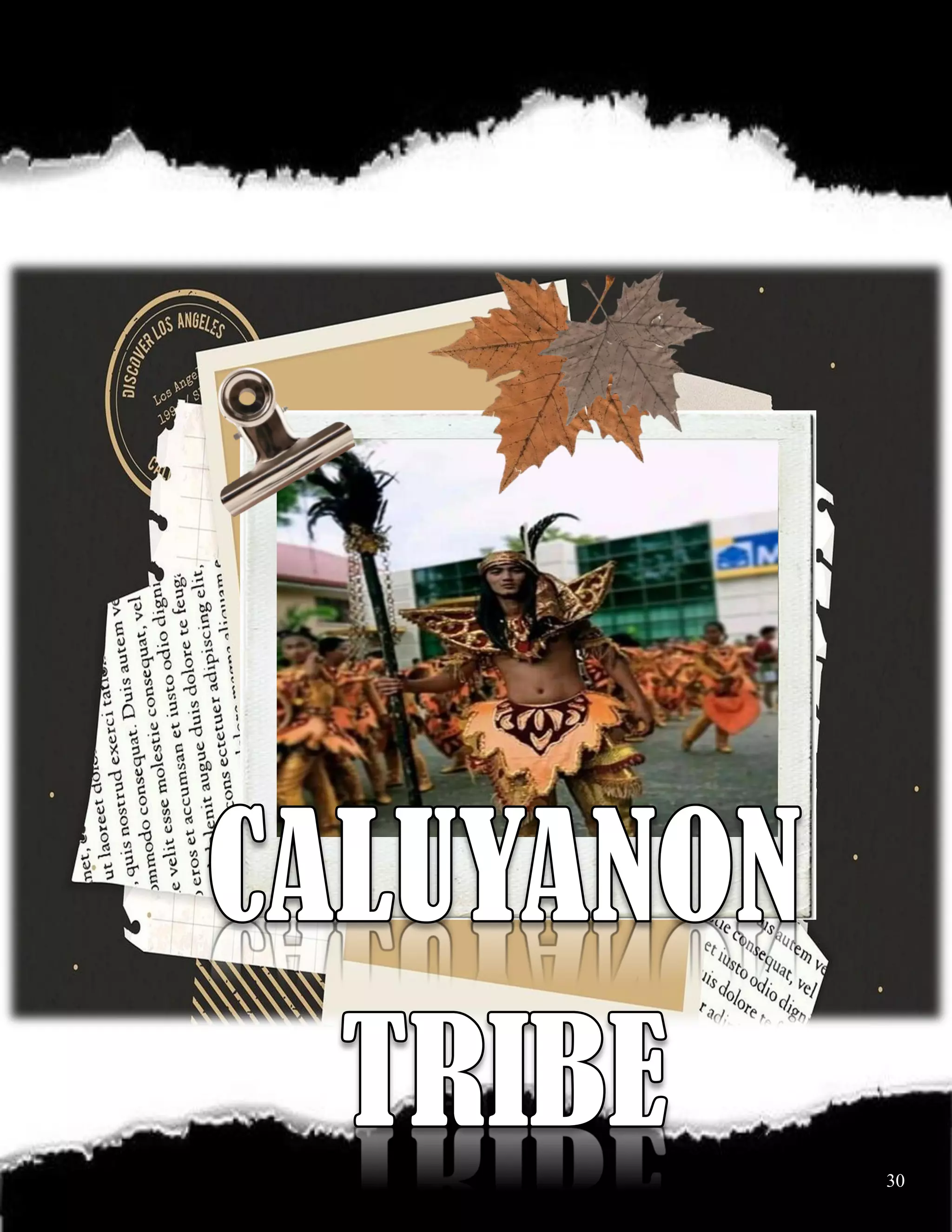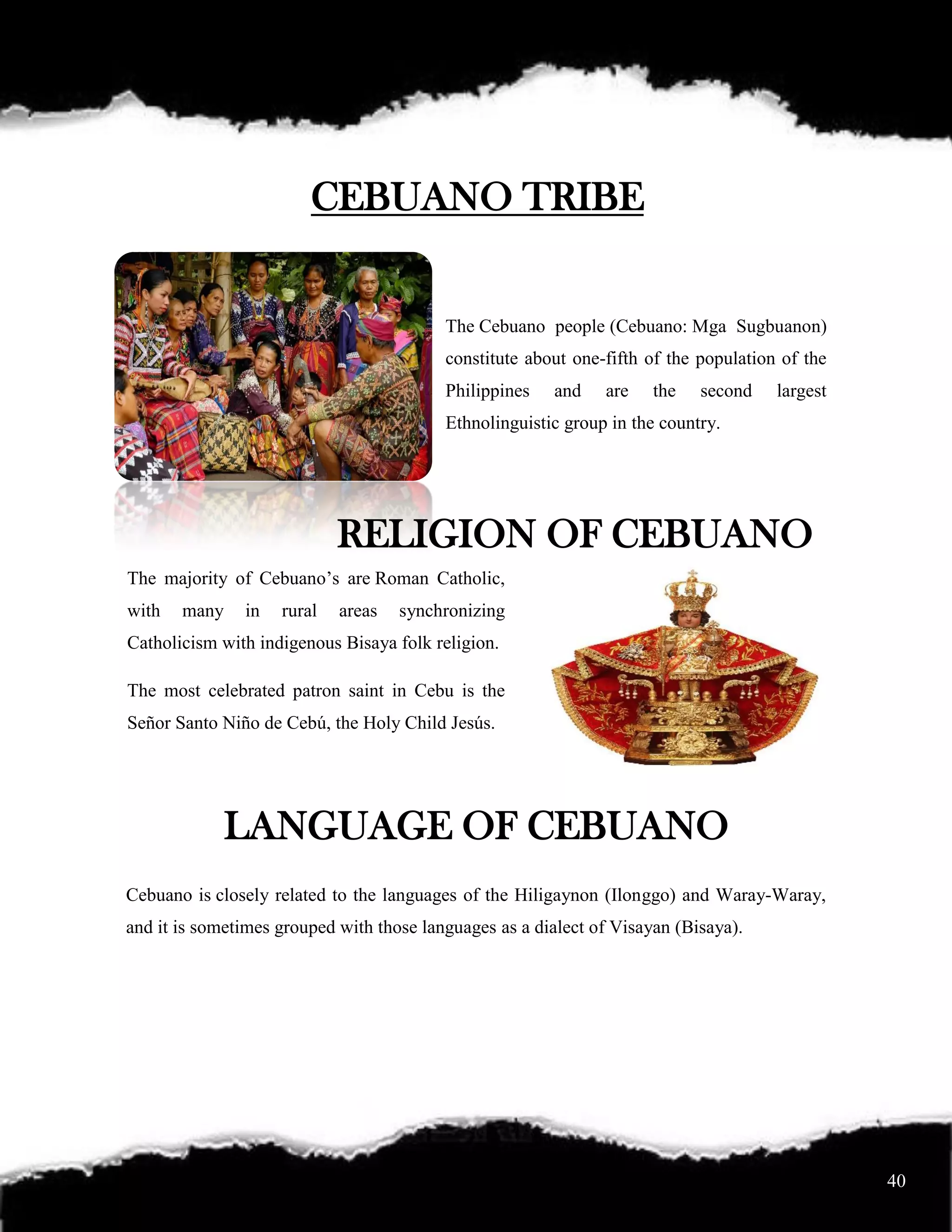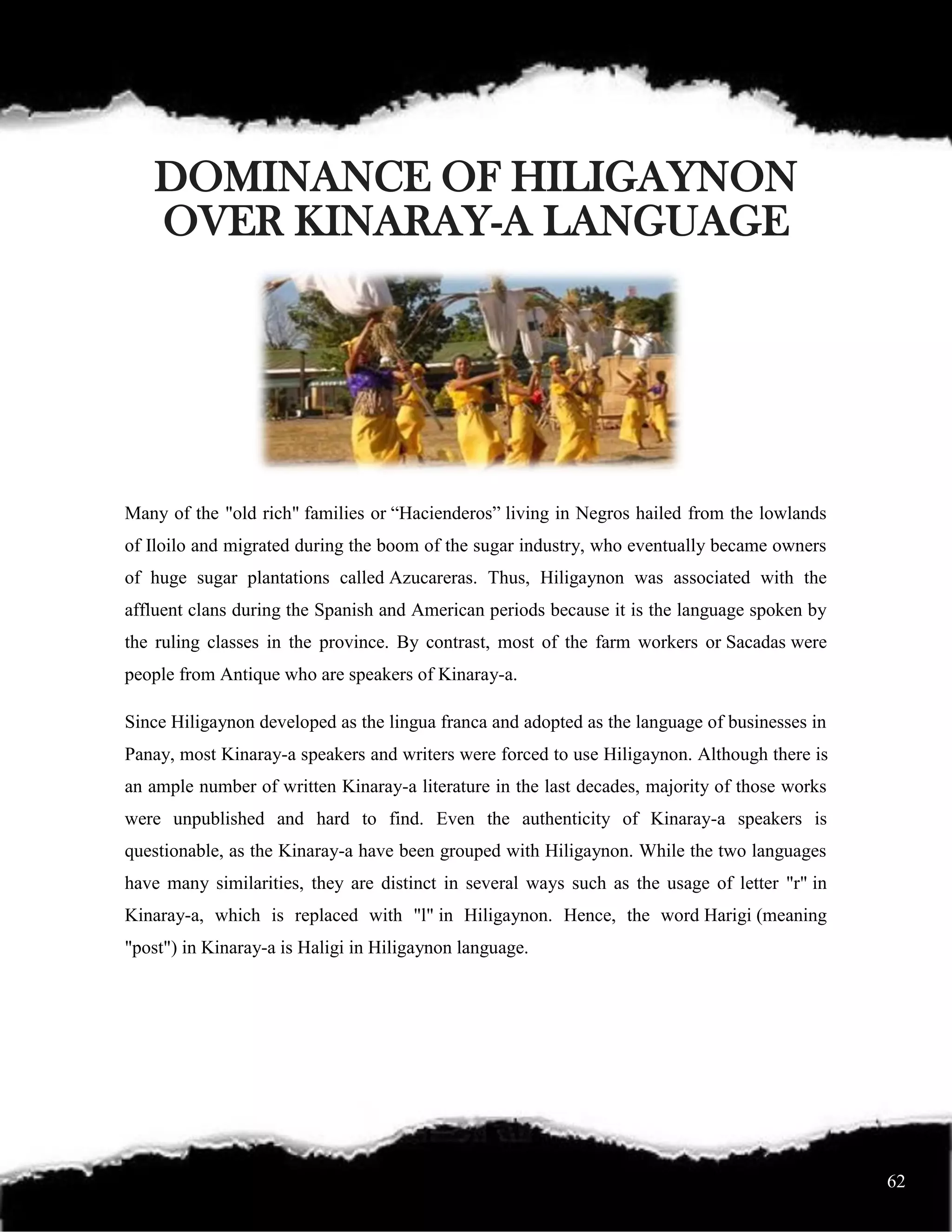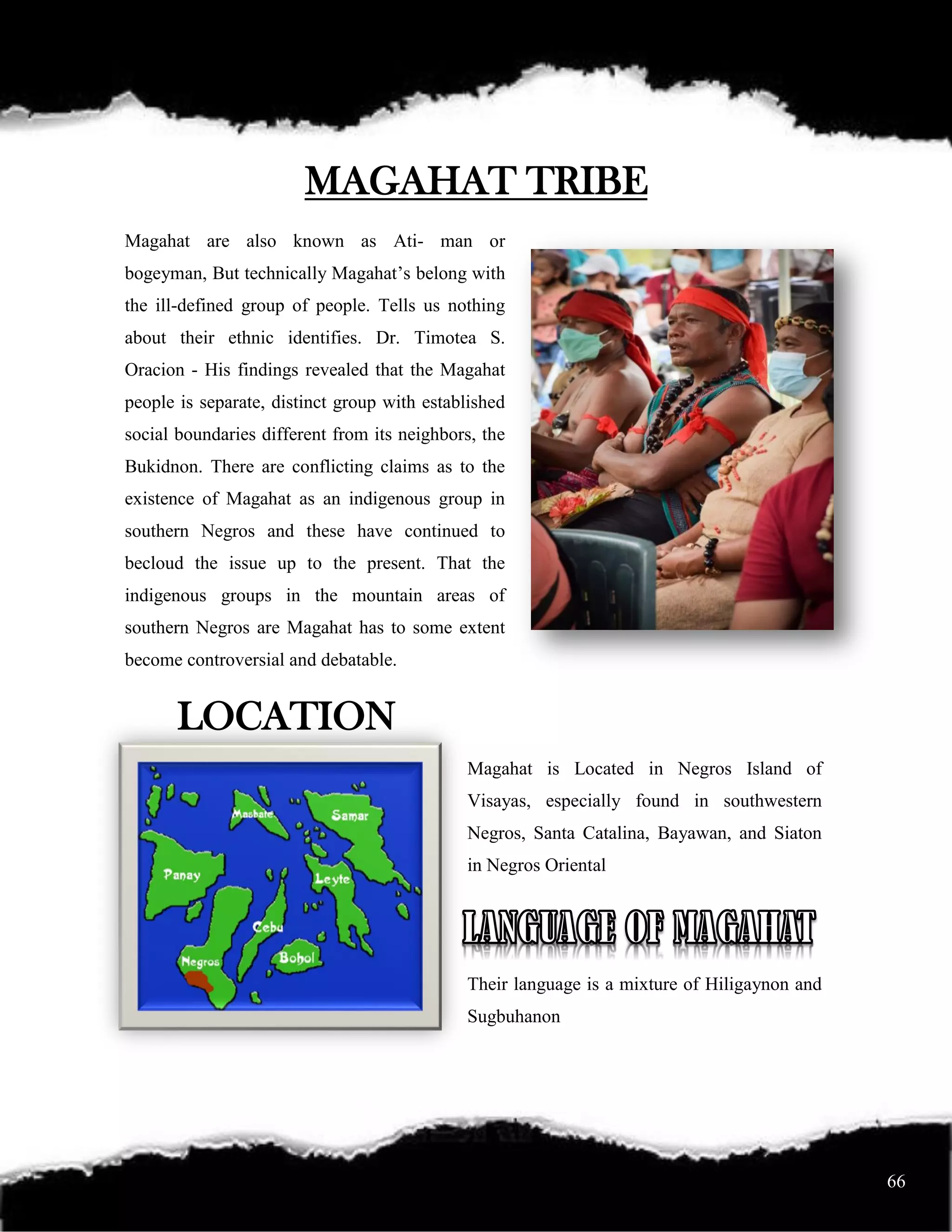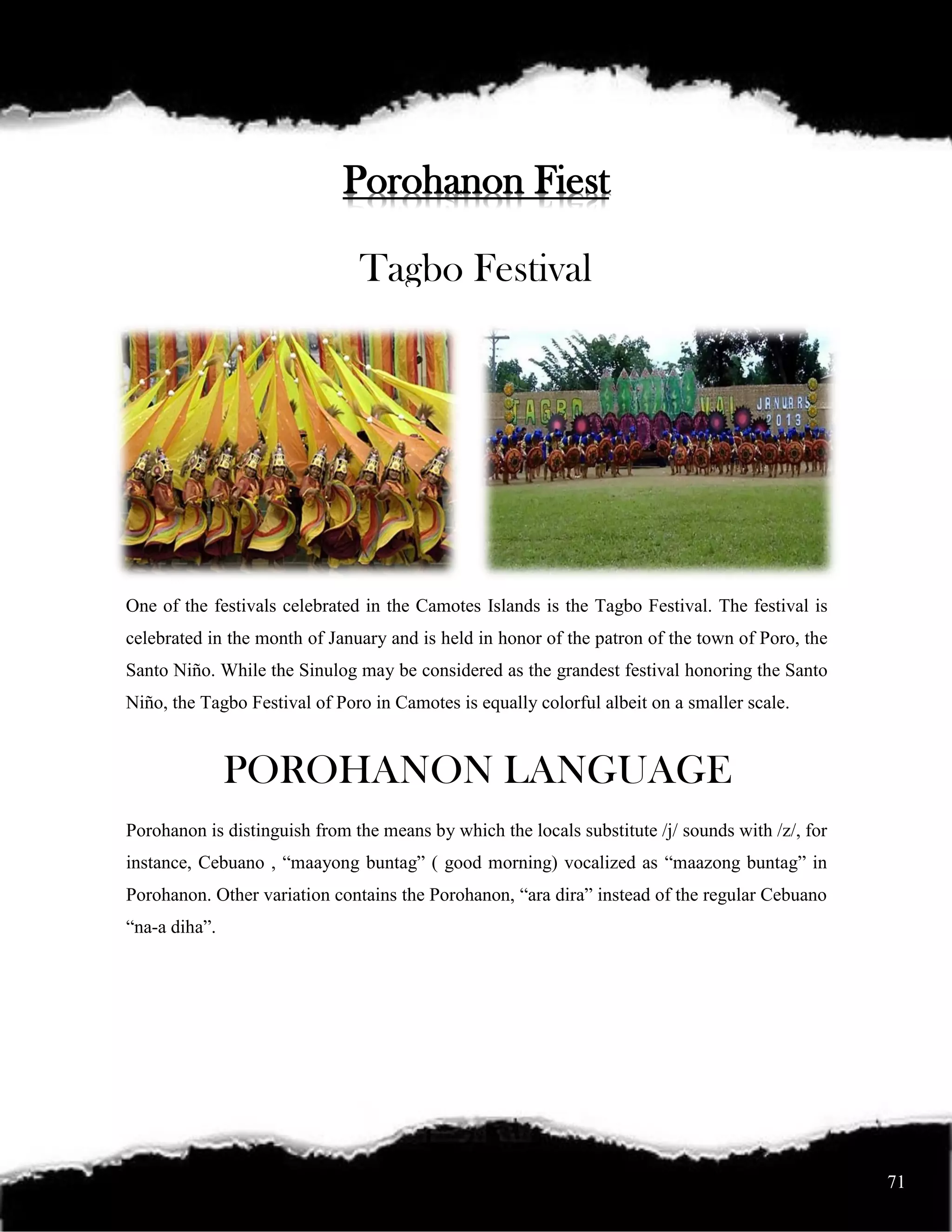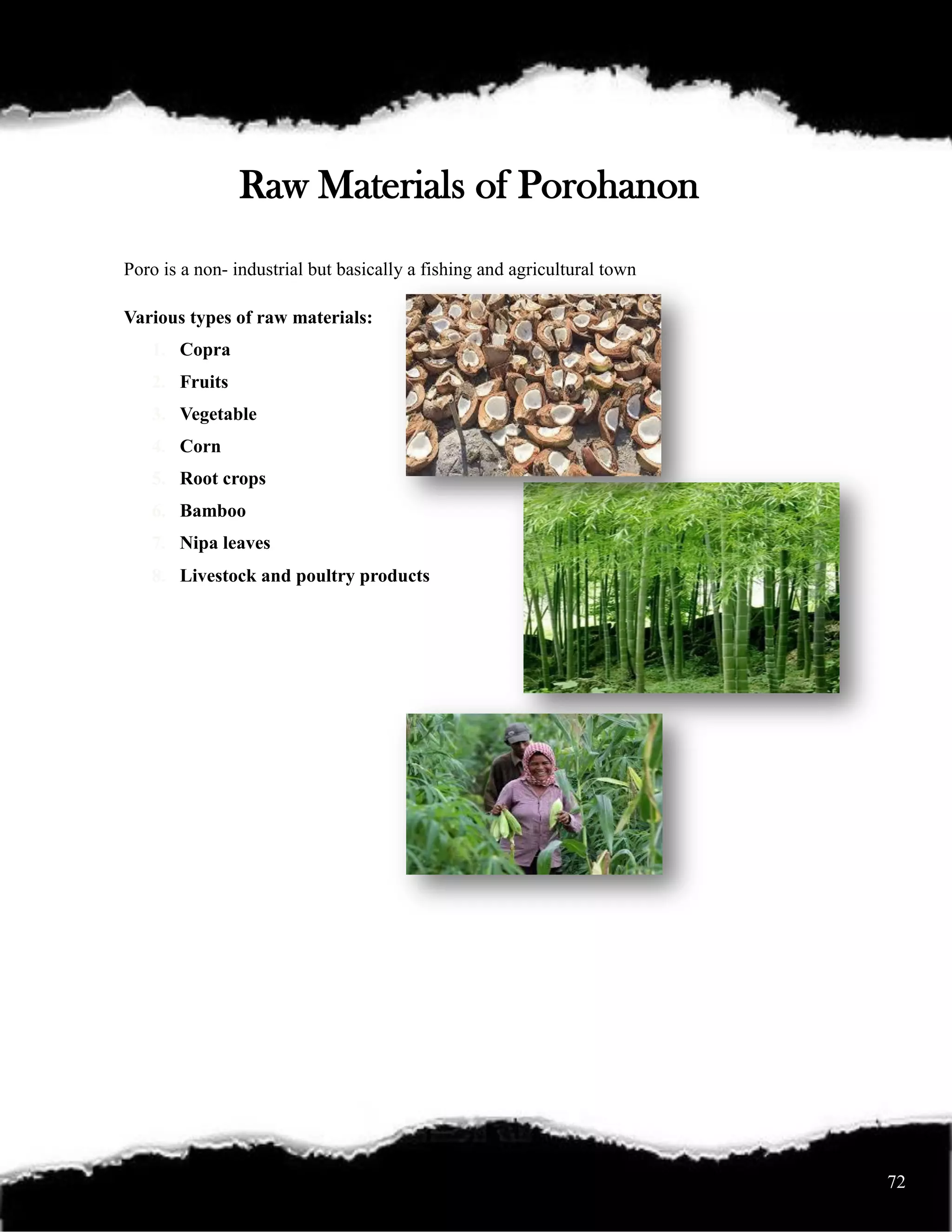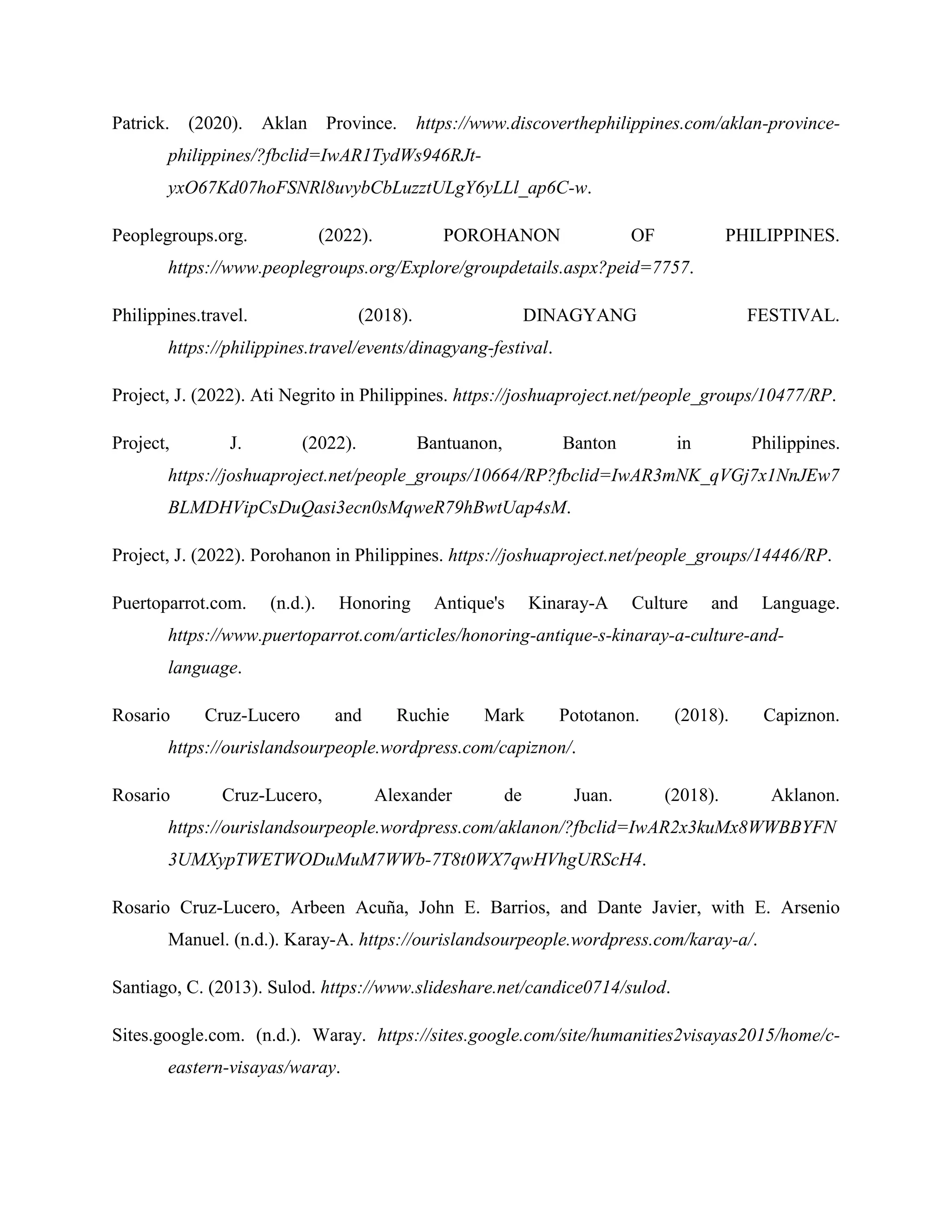The document reports on various indigenous ethnolinguistic groups in the Visayas region of the Philippines, focusing on tribes such as the Aklanons and Atis, detailing their culture, history, languages, and festivals. It highlights the rich diversity of traditions and practices among these groups, emphasizing the significance of their languages and customs in contemporary society. The Visayas, known for its unique cultural heritage, plays a crucial role in the Philippines' overall identity.


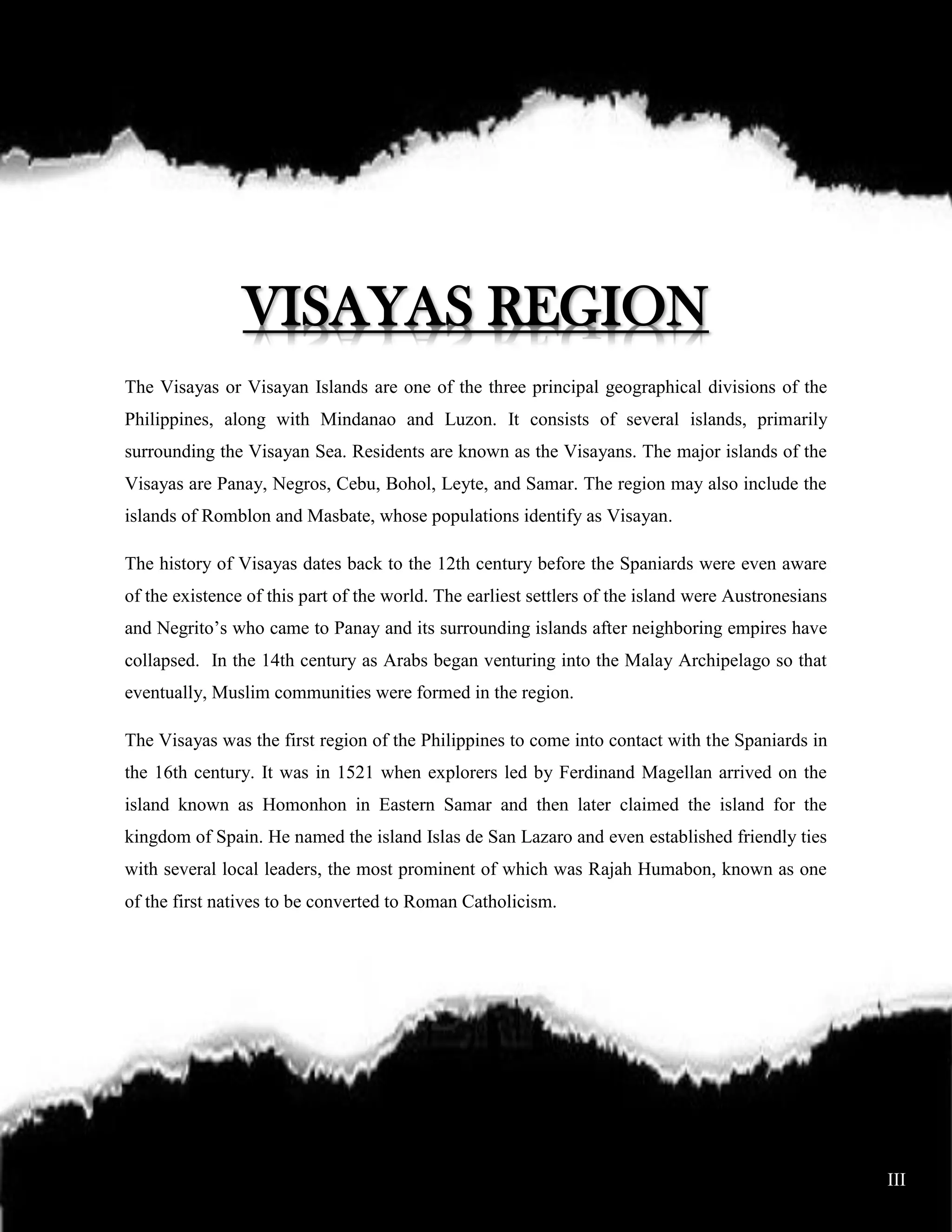






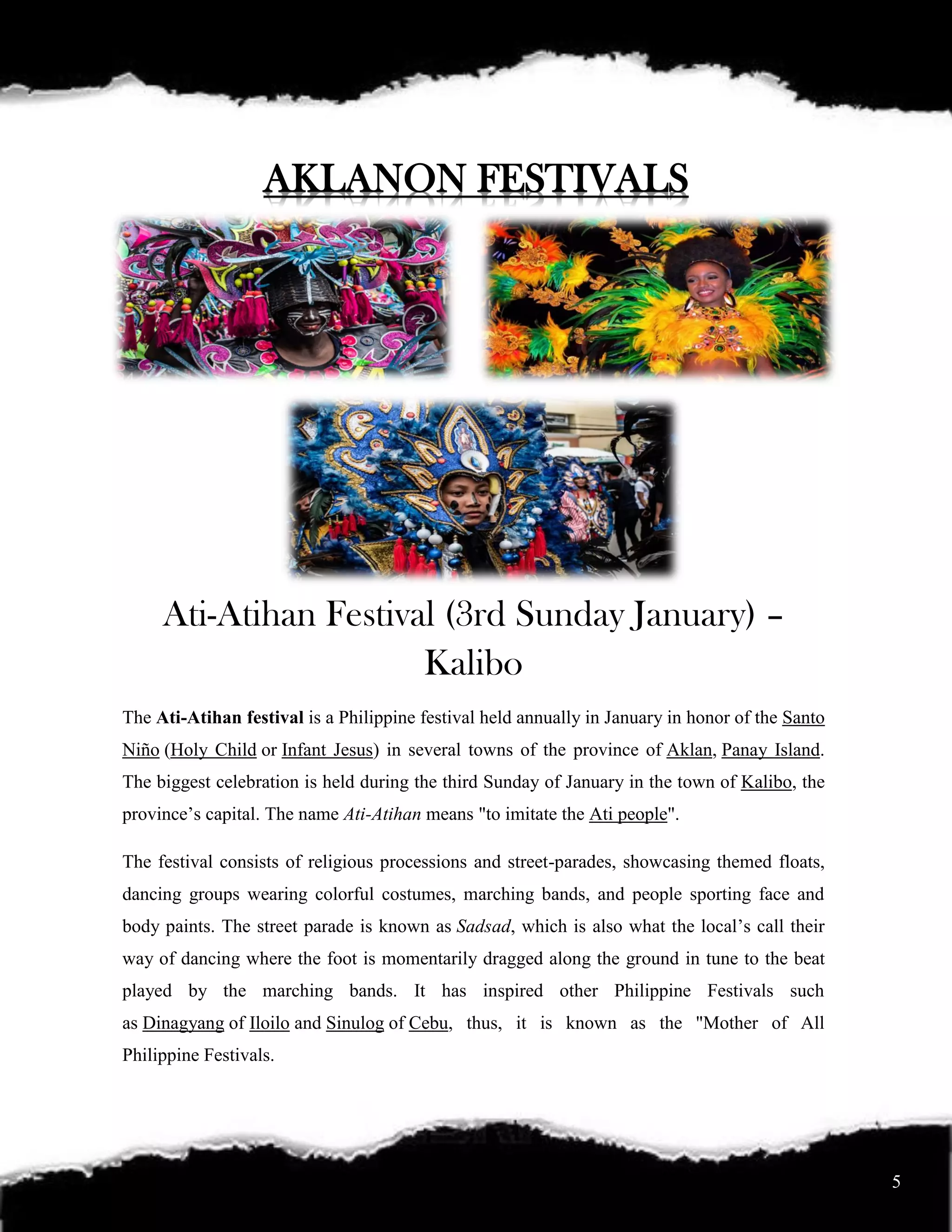


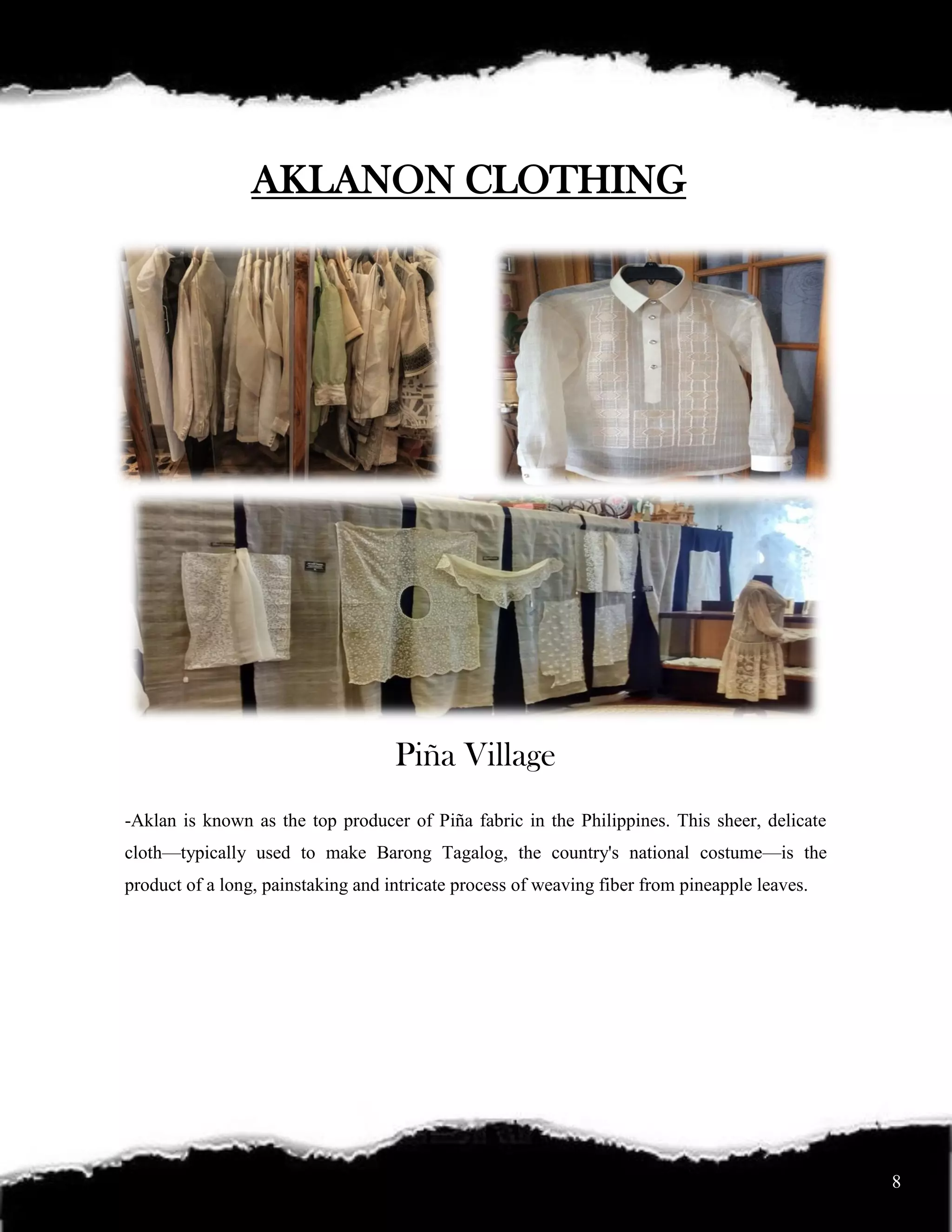
![14
LANGUAGE OF AKLANON
Aklanon (Akeanon), also known as Bisaya/Binisaya nga Aklanon/Inaklanon or simply Aklan,
is an Austronesian language of the Bisaya subgroup spoken by the Aklanon people in the
province of Aklan on the island of Panay in the Philippines.
Its unique feature among other Bisaya languages is the close-mid back unrounded vowel [ɤ]
occurring as part of diphthongs and traditionally written with the letter ⟨Ee⟩ such as in
the autonyms Akean and Akeanon. However, this phoneme is also present in other but
geographically scattered and distant Philippine languages,
namely Itbayat, Isneg, Manobo, Samal and Sagada.
The Malaynon dialect is 93% lexically similar to Aklanon and retained the "l" sounds, which
elsewhere are often pronounced as "r".
Ibayjanon (Ibajaynon) dialect has shortened versions of Aklanon words.
9](https://image.slidesharecdn.com/finalproject-indigenenousethnolinguisticgroupsinvisayas-221008054128-ed1acf8b/75/INDIGENOUS-ETHNOLINGUISTIC-GROUPS-IN-VISAYAS-pdf-14-2048.jpg)




